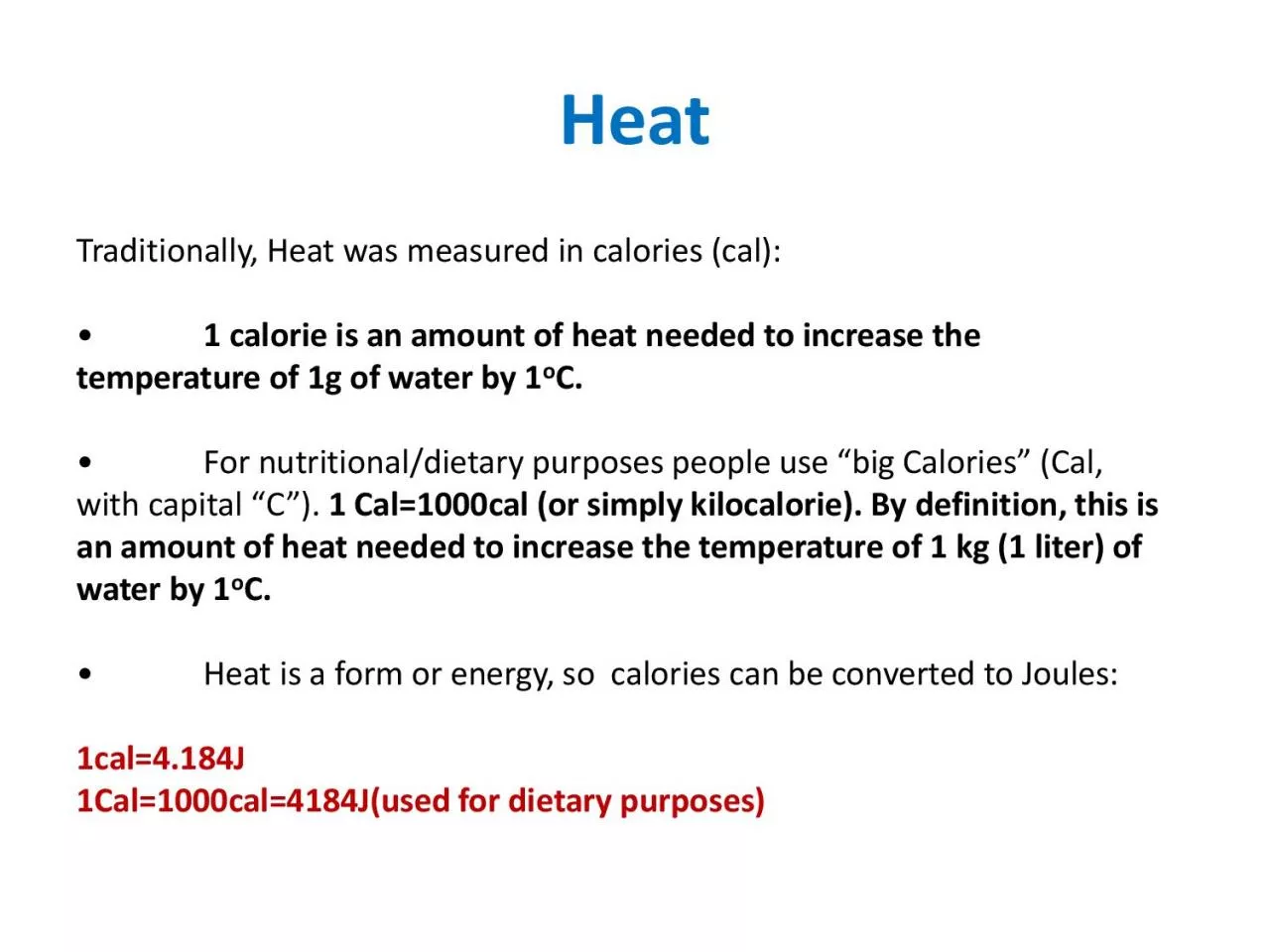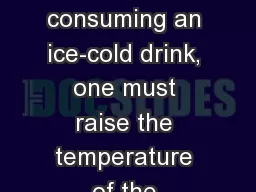PDF-Traditionally Heat was measured in calories cal
Author : emmy | Published Date : 2022-08-20
1 calorie is an amount of heat needed to increase the temperature of 1g of water by 1 o C For nutritionaldietary purposes people use big Calories Cal with capital
Presentation Embed Code
Download Presentation
Download Presentation The PPT/PDF document "Traditionally Heat was measured in calor..." is the property of its rightful owner. Permission is granted to download and print the materials on this website for personal, non-commercial use only, and to display it on your personal computer provided you do not modify the materials and that you retain all copyright notices contained in the materials. By downloading content from our website, you accept the terms of this agreement.
Traditionally Heat was measured in calories cal: Transcript
Download Rules Of Document
"Traditionally Heat was measured in calories cal"The content belongs to its owner. You may download and print it for personal use, without modification, and keep all copyright notices. By downloading, you agree to these terms.
Related Documents














